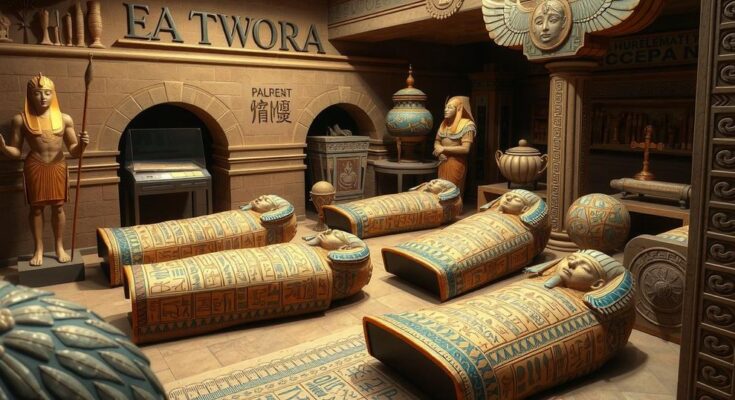A new study has debunked prior claims about the “Mysterious Lady,” an ancient Egyptian mummy, previously thought to be pregnant and suffering from cancer. A team of researchers found that what was believed to be a fetus was merely embalming material, and no evidence of cancer was present. This study highlights the challenges of interpreting ancient mummies and emphasizes the need for careful analysis in future research.
A recent study has resolved a long-standing debate surrounding the so-called “Mysterious Lady,” an ancient Egyptian mummy initially thought to be a pregnant woman suffering from cancer. Discovered in Luxor and housed in Poland since 1826, this mummy was misidentified as a male priest until a 2021 analysis proposed it was a young woman with a fetus. However, a new, thorough examination by a team of 14 international researchers has refuted both assertions, establishing that the purported fetus was merely embalming material, and there is no supported evidence of cancer.
The 2021 assertion by the Warsaw Mummy Project claimed that the mummy contained a fetus approximately 6.5 to 7.5 months old, identified from CT scans revealing a material cluster in the abdomen. The absence of distinct fetal bones led researchers to postulate that the acidic environment of the womb had dissolved them. Critics, including radiologist and mummy specialist Sahar Saleem, questioned the possibility of such bone degradation. The recent study clarifies that the abdominal mass consisted of embalming materials, part of the mummy’s preservation process. Furthermore, it was noted that embalming fluid would have negated the necessary conditions for bone dissolution, rendering the original claim implausible.
Additionally, the 2021 study suggested that the Mysterious Lady suffered from nasopharyngeal cancer based on irregularities in her skull. Yet, the latest research indicates that these deformations were likely due to the embalming process rather than disease. Standard mummification included breaking the skull to remove soft tissue, which may explain the observed damage. The researchers involved in the current analysis found no evidence of cancerous growth, underscoring the prior misinterpretation stemming from insufficient data.
This incident illuminates the broader challenges in mummy studies, particularly in differentiating between post-mortem changes, embalming remnants, and genuine health conditions. Robust evidence exists for cancer in other mummies, however, scientists must proceed with caution, favoring direct tissue analyses over imaging alone.
The conclusion of this investigation is significant beyond simply correcting misconceptions. It serves as a reminder of the complexities surrounding the interpretation of ancient remains, as post-mortem alterations can obscure biological realities. The widespread public fascination with this case points to the potential for sensational claims and emphasizes the need for meticulous verification in mummy studies. The research team concluded that this study definitively addresses previous claims of the mummy’s pregnancy and the presence of nasopharyngeal cancer, advocating for future inquiries to focus on broader historical health matters in ancient Egypt rather than on potentially misinterpreted individual cases.
In summary, the research on the Mysterious Lady has provided clarity on misconceptions regarding her possible pregnancy and cancer diagnosis. The new findings indicate that previous claims were based on misinterpretations of embalming materials and post-mortem alterations rather than genuine biological evidence. This case reinforces the importance of rigorous scientific inquiry and verification in the study of mummified remains and encourages a shift in research focus towards understanding broader health issues in ancient Egyptian society.
Original Source: indiandefencereview.com




